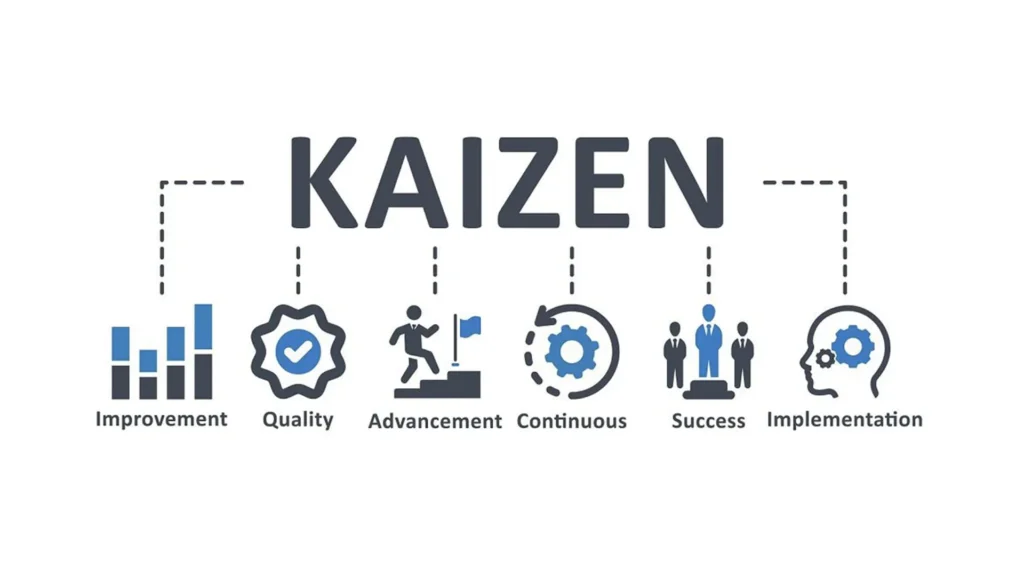By Ubaid Syed
Kaizen Software Development: Tips and Best Practices
In software development, continuous improvement is essential for staying ahead in a competitive market. Kaizen, a Japanese term meaning “change for the better,” embodies a philosophy of continuous improvement that can be particularly effective in software development. This article explores the principles of Kaizen software development, providing tips and best practices for implementing this methodology successfully. We’ll delve into the benefits of Kaizen software, the role of a Kaizen software training manager, and the importance of training management software. We’ll also touch upon the broader implications of Kaizen software solutions and the concept of Kaizen codes, including grand Kaizen codes.
Understanding Kaizen Software Development
Kaizen software development is rooted in the Kaizen philosophy, which emphasizes small, incremental changes over time to achieve continuous improvement. This approach can be highly effective in software development, where frequent updates, bug fixes, and feature enhancements are necessary to maintain software quality and user satisfaction. By adopting Kaizen principles, development teams can streamline processes, reduce waste, and enhance productivity.
Key Principles of Kaizen
Kaizen is built on several core principles that guide continuous improvement:
- Continuous Improvement: Focus on making small, incremental changes rather than large, disruptive ones.
- Employee Involvement: Encourage all team members to contribute ideas for improvement.
- Standardization: Develop and follow standardized processes to ensure consistency and quality.
- Measurement: Use metrics and data to track progress and identify areas for improvement.
- Customer Focus: Prioritize customer satisfaction by delivering high-quality software that meets user needs.
Benefits of Kaizen Software
Implementing Kaizen in software development offers numerous benefits. These include improved efficiency, higher-quality software, and increased customer satisfaction. By fostering a culture of continuous improvement, organizations can create software that evolves to meet changing market demands and user expectations.

Improved Efficiency
Kaizen encourages teams to identify and eliminate waste in their processes. This can involve streamlining workflows, automating repetitive tasks, and improving communication and collaboration. As a result, development teams can work more efficiently, delivering software faster and with fewer resources.
Higher Quality Software
Kaizen helps teams identify and address issues early in the development process by focusing on continuous improvement. This proactive approach to problem-solving leads to higher-quality software with fewer bugs and defects. Additionally, regular feedback loops ensure user feedback is incorporated into the development process, enhancing software quality.
Increased Customer Satisfaction
Kaizen places a strong emphasis on customer focus. Developing teams can deliver products that meet customer expectations by continually improving software based on user feedback and needs. This increases customer satisfaction and loyalty, as users feel their needs are being heard and addressed.
The Role of a Kaizen Software Training Manager
A Kaizen software training manager is crucial in implementing and sustaining Kaizen practices within a development team. This individual is responsible for training team members on Kaizen principles, facilitating continuous improvement initiatives, and ensuring that the team adheres to standardized processes.
Responsibilities of a Kaizen Software Training Manager
- Training and Education: Provide training sessions and resources to educate team members on Kaizen principles and practices.
- Facilitating Improvement Initiatives: Organize and lead Kaizen events, such as workshops and brainstorming sessions, to identify and implement improvements.
- Monitoring and Measurement: Track progress using metrics and data and provide feedback to the team to ensure continuous improvement.
- Standardization: Develop and enforce standardized processes to maintain consistency and quality across the development team.
Skills and Qualifications
A successful Kaizen software training manager should possess strong leadership and communication skills and a deep understanding of Kaizen principles and software development processes. Experience in training and facilitation and the ability to analyze data and metrics are also essential.
The Importance of Training Management Software
Training management software is a valuable tool for Kaizen software training managers. This software helps streamline the process of organizing and delivering training, tracking progress, and managing resources. Using training management software, Kaizen software training managers can implement and sustain continuous improvement initiatives more effectively.
Features of Training Management Software
- Course Management: Create and manage training courses, including scheduling, content delivery, and assessment.
- Progress Tracking: Monitor the progress of individual team members and the overall team using metrics and data.
- Resource Management: Allocate and manage resources, such as training materials and facilitators.
- Reporting and Analytics: Generate reports and analyze data to track training programs’ effectiveness and identify areas for improvement.
Benefits of Training Management Software
Training management software offers several benefits, including improved efficiency in organizing and delivering training, better tracking progress and outcomes, and enhanced resource management ability. This enables Kaizen software training managers to support continuous improvement within the development team more effectively.
Implementing Kaizen Software Solutions
Kaizen software solutions encompass a range of tools and practices designed to support continuous improvement in software development. These solutions can include project management software, version control systems, and collaboration tools. By integrating these solutions into their workflow, development teams can enhance their ability to identify and implement improvements.
Key Components of Kaizen Software Solutions
- Project Management Software: Tools like JIRA or Trello can help teams organize and manage their work, track progress, and collaborate more effectively.
- Version Control Systems: Systems like Git allow teams to manage changes to their codebase, track revisions, and collaborate on code development.
- Collaboration Tools: Platforms like Slack or Microsoft Teams facilitate communication and collaboration, making it easier for team members to share ideas and feedback.
Best Practices for Implementing Kaizen Software Solutions
- Start Small: Begin with key tools and practices and gradually expand as the team becomes more comfortable with Kaizen principles.
- Involve the Team: Encourage all team members to participate in selecting and implementing Kaizen software solutions.
- Measure and Adjust: Use metrics and data to track the effectiveness of Kaizen solutions and make adjustments as needed to ensure continuous improvement.
The Concept of Kaizen Codes
Kaizen codes refer to best practices and coding standards that promote continuous improvement in software development. By adhering to Kaizen codes, development teams can maintain high-quality codebases, reduce technical debt, and ensure that their software remains maintainable and scalable.

Examples of Kaizen Codes
- Code Reviews: Regular code reviews help identify and address issues early, ensuring that code quality remains high.
- Automated Testing: Implementing automated tests helps catch bugs and defects early in development.
- Refactoring: Regularly refactoring code helps reduce technical debt and improve code maintainability.
The Role of Grand Kaizen Codes
Grand Kaizen codes represent the overarching principles and best practices that guide the implementation of Kaizen in software development. These codes encompass coding standards, project management practices, collaboration techniques, and continuous improvement initiatives. By following grand Kaizen codes, development teams can create a culture of continuous improvement that permeates all aspects of their work.
Conclusion
Kaizen software development offers a powerful approach to continuous improvement in the fast-paced world of software development. By embracing Kaizen principles, development teams can enhance efficiency, produce higher-quality software, and increase customer satisfaction. The role of a Kaizen software training manager is crucial in facilitating and sustaining these practices, and training management software provides valuable support for organizing and delivering training. Implementing Kaizen software solutions and adhering to Kaizen codes further reinforces the culture of continuous improvement, ensuring that development teams remain agile, responsive, and capable of delivering exceptional software. By integrating these practices into their workflow, organizations can achieve lasting success and maintain a competitive edge in the software industry.







